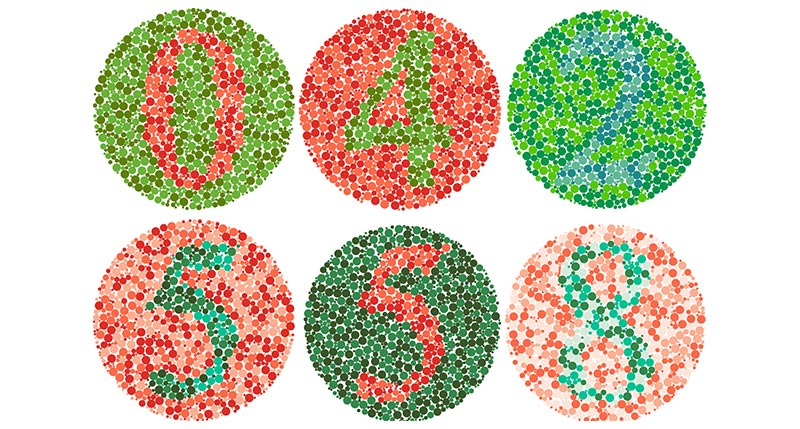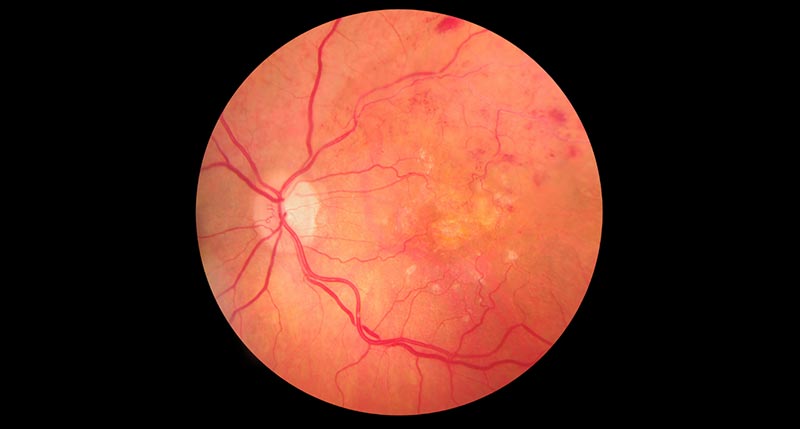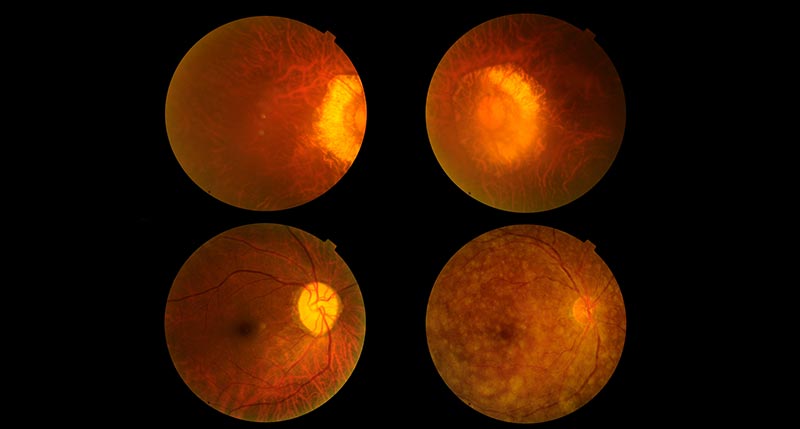Your ability to see color adds so much to life! Think of seeing a rainbow, or the bloom on a rose, or looking into your child’s or loved one’s eyes. Color helps us form memories, make decisions, and can spark emotions.
An average person can see about 1 million colors thanks to three different types of “cone” cells in your retina that distinguish red, blue, and green. The rest of the colors you perceive are a combination of those three.
The holiday season is upon us, and everywhere you look you’ll see lights and decorations that often include the colors red and green. However, for those with red-green color deficiency (sometimes referred to as “color blindness”) the holiday season may look completely different.
Color Blindness: 3 Types
There are an estimated 300 million color blind people in the world. One in every 12 men — but only one in 200 women — are color blind to some extent. This visual perception condition affects everyone differently, but it boils down to the fact that these individuals perceive color differently from the majority of the population.
Color-vision deficiency — the correct name for what is often called color blindness — stems from individual differences in the photoreceptor “cones” in your retina, which help you see different colors and also to see in the dark.
Though there are individuals who truly cannot see any colors, most “colorblind” people can still perceive most colors. But, since their photoreceptors aren’t working properly, these individuals often have difficulty distinguishing between some colors or hues of color. That’s why color blindness is more correctly called “color deficiency.”
There are three main types of color vision deficiency:
- Red/green color vision deficiency. About 98% of the color blind population fits in this category. People with red/green color vision deficiency may be unable to distinguish between some shares of red and green. They may look grayish, some reds may appear a bit greener, or green may appear more red, or yellowish Luckily those with this type of color vision challenge can typically see most other colors in the spectrum fairly well. Fun fact: many people with this type of color vision deficiency are surprised when the discover that peanut butter is not green!
- Blue/yellow color deficiency. This type of color blindness is more rare than red/green. For people with this color vision deficiency, yellow may take on a reddish, gray or violet hue, and the color blue may appear to be green. We have to admit, it would be very interesting if the sky appeared green!
- Total color blindness. This level of color deficiency is extremely rare — only 0.0003% of the US population has it — and is often accompanied by other visual struggles. While people with the first two types of color blindness can see at least some colors, those with true color blindness cannot see any color whatsoever. They may also have difficulty with visual acuity and clarity.
How to live with color blindness
The bad news is, there is not a cure for color blindness or color vision deficiency. The good news is, it is not a life-threatening condition. People with this condition are not impacted by it significantly for the most part. In fact, a lot of people don’t even realize they are color vision deficient. Curious whether you may be? Try this free online color blind test.
However, it’s interesting to note that there are a lot of areas in our lives where color plays a significant role. Those with normal color acuity wouldn’t notice the difference, but those without definitely would.
For example, certain careers have a restriction on hiring people with color vision deficiency. These careers include the military, firefighters, and law enforcement.
While it sounds discriminatory, when a job depends on your ability to distinguish colors to some extent, a color-deficient person may not be able to perform it well. Examples include electricians, who must be able to see color-coded wires, and pilots, who need to correctly interpret color-specific safety signals. Color-blind people would also not likely succeed in the fields of interior or fashion design, and school teachers often use learning tools that use colors as a basis.
Aside from these specific examples, a colorblind person can do pretty much anything and everything the rest of the population can do.
Can we correct color vision deficiency?
Color vision deficiency often runs in families and treatments for it are only given if the patient chooses to pursue them. Some feel that the treatment hinders them more than not being able to perceive color well.
The treatments include colored filters worn either in the lenses of a pair of glasses or incorporated into a single contact lens worn in one eye. This treatment works by creating a difference between the wavelengths of light each eye perceives, and helps people tell the difference between two colors that may typically look the same to them. This serves as a workaround when needed, but doesn’t really enable someone with color blindness to perceive the actual color they can’t discern. Interested in learning more? EnChroma sells glasses that claim to make colors visible for those with color blindness.
But human beings are smart, and most people with color deficiency learn ways to guide them about which color is which. Stoplights, for example, are always arranged in the same red-yellow-green order, whether vertically or horizontally. And it’s fairly easy to remember that the sky is blue, grass is green, bananas are yellow, and oranges are – well, orange.
Technological advances and apps can help individuals who need assistance with color-specific activities, whether that’s matching the clothes they wear or determining if a fruit is ripe enough to eat.
This holiday season, whether you have color vision deficiency or not, focus on the fact that we all have a unique way to view the world. Let’s celebrate our differences as we head toward a happy and healthy new year!





